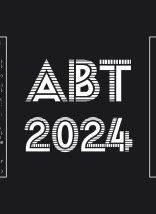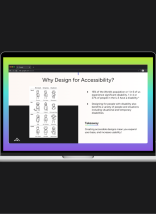Every day, there are 11 million formal meetings in the United States. That’s more than 3 billion meetings per year. By one estimate, this means that the average professional spends 37% of his or her workday in meetings. That’s a lot of time. As project managers, it is up to us to set up our meetings for success and make the best use of everyone’s time.
When I think of someone who’s an expert in taming problems, I think of Cesar Milan, the dog whisperer. He’s a master of controlling wayward animals with a simple click of the tongue—a small gesture that makes a big difference. That in mind, it’s time for project managers like us to become meeting whisperers, taking the small but important steps needed to control wayward meetings.
How Meetings Lose Their Way
When was the last time you walked out of a meeting thinking, “Wow. That meeting was incredible!” Most likely you’ve left feeling drained and with an action item of a follow up meeting. But it doesn’t have to be this way. It’s up to you, project manager, to not be the main culprit of bad behavior. If you’ve ever set up a meeting and did/thought any of these things, your meeting could be a waste of time:
- Who needs an agenda? I’ve got this.
- I don’t need to explain why we’re meeting. We’ll cover that in the meeting.
- I can squeeze another one hour meeting between my 2 o’clock and 4 o’clock. It’s not like I need to prep the room.
- It’s cool if people use their phones/laptops during the meeting. I know they’re busy.
- This collaborative meeting is turning into a one-man show, but I can’t interrupt him. That would be rude.
- Is this phone working? Why is nobody talking, and why are they all looking at me?
Become A Meeting Whisperer
Scheduling a meeting shouldn’t be taboo. Your meeting shouldn’t be unproductive or uninspiring. It should be to the point, drive results and get things done. Here’s a helpful checklist to make this happen. What project manager doesn’t like a checklist?
1. No Agenda | No Meeting
If you walk into your meeting and you don’t have an agenda, your meeting will not be productive. Instead of getting things done, you just charged your client money to talk to your co-workers about their weekend plans. Create a firm agenda with a desired outcome and plan, then send it out with your meeting request. Remember to be flexible, but having a set agenda for the meeting sets you up for success.
2. Have A Set Meeting Time Every Time
When you plan a project, you know there will be demos with the client. You also know that weekly check-ins lead to success. Plan for these meetings, and schedule them at the same day and time every week. This gets both your team and your client into a rhythm. It also guarantees your developers will always have their next release in mind and helps them avoid unexpected disruptions of their work.
3. Think Like A Boy Scout
Follow the scout motto and always be prepared to handle possible technology and room issues. Give yourself enough time to set up the room, clean the whiteboard, and make sure you can start your meeting on time. If you are using a conference line, dial in early. If you need to walk through a presentation, have it on screen as people walk in. Set out copies of the agenda on the table. Taking time for these preparation tasks will help you start your meeting on the right foot.
4. Assign A Note Taker
If you are running the meeting and doing most of the talking, then assign someone to help you take notes. If you are operating as the facilitator, then assign yourself as the note taker. Don’t be afraid to pause the conversation to let everyone know you’re jotting down what they said. Repeat back key points. At the end of the meeting, share out your meeting notes so everyone is on the same page. This will help your team leave the meeting ready to work instead of feeling drained and unsure.
5. Please Mind The Clock
It’s up to you to control the pace and respect everyone’s schedule. If you scheduled a meeting for 30 minutes, start wrapping it up at the 25 minute mark. Use your agenda to time-box the meeting and set a end time. Time-boxing will discourage the group from wanting to ramble. It will also reveal if a topic is too large to cover in one session. If a topic starts to run long, carve out time for a micro-meeting to stay on schedule.
6. Leave Your Cell Phones At The Door
Messing with your cell phone during a meeting is disrespectful. We understand how busy everyone is, but the world will not end if you go for 30 minutes without a phone. At the start of the meeting, ask everyone to stay off their phones. If there are a lot of laptops, go around the room and ask everyone to identify how they will be using their laptop. If it’s not being used to bring value to the meeting, ask them to close it. These measures sound strict, but they’re essential to keeping everyone focused in the meeting.
7. Be The Enforcer
If you called the meeting, you control the pace. We’ve all experienced the meeting hijacker—a person who takes advantage of having everyone in the room to interject his/her own agenda. This can rapidly eat up important time while distracting from the purpose of the meeting. If someone interrupts the agenda, it’s up to you to speak up. You can diplomatically interrupt to get the meeting back on track. Listen to his/her point, express appreciation and then suggest tabling that topic for another time. Engage with the group and be a facilitator.
8. Leave With A Plan
What project manager doesn’t love action items? The most successful meetings are those that end with actionable tasks and a clear understanding of what’s expected. At the close of the meeting, recap what was discussed, address each person by name who has a takeaway, and get their confirmation that they understand what’s expected of them. After the meeting, send out a recap email. Don’t forget to thank everyone for participating.
What’s Your Approach?
Ultimately, we project managers are the ones responsible for the success of our meetings. We can prevent our meetings from being a waste of our colleagues’ and clients’ time. Becoming a meeting whisperer doesn’t mean being bossy or condescending; it’s simply about being respectful of everyone’s time.
We all have our own style and rules to live by when it comes to meetings. Some of these techniques may not work for you, but they should give you new ideas on how to transform your meetings. Do you have any tips or suggestions you’d like to share? Atlantic BT would love to know!









